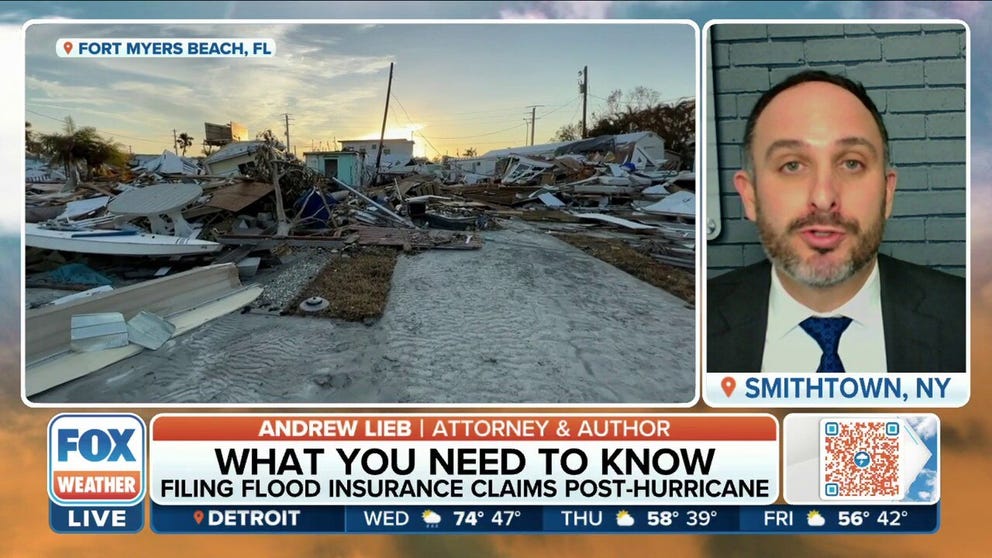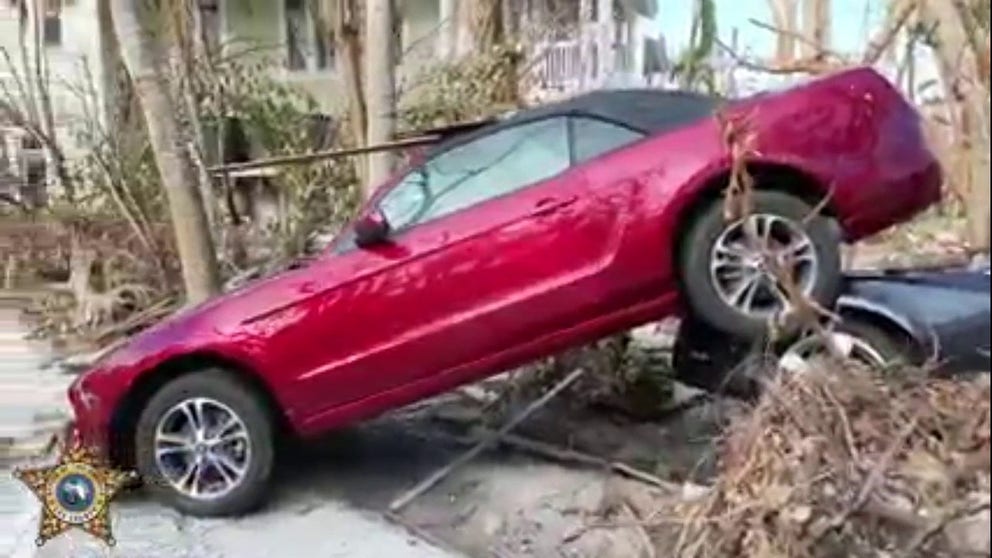Hurricane Ian exposes complicated path ahead for insurance claims
FOX Weather talked to insurance experts, attorneys and veteran storm victims after floods, thunderstorms and hurricanes. Here is how they would make themselves whole again.
Filing an insurance claim after a hurricane
Attorney Andrew Lieb breaks down the flood insurance process on FOX Weather.
Hurricane Ian, which was a Category 4 cyclone when it made landfall on the U.S. left a huge swath of destruction in its wake. The infrastructure so badly damaged some areas, search crews were forced to use drones to survey destroyed homes, cars, boats and bridges. With the appearance of an insurmountable amount of destruction, how can residents make themselves whole?
IAN'S DESTRUCTION EXPECTED TO RANK IN TOP 10 COSTLIEST HURRICANES IN US HISTORY
Drones discover more of Ian's wrath daily
The Lee County Sheriff's Office is forced to use drones to survey damage from Hurricane Ian. Cars floated on top of cars and homes are skeletons.
Insurance and property analysis companies have upped their damage estimates since the early days of recovery. CoreLogic stated in a press release that insured and uninsured losses due to wind and flood damage could be as high as $70 billion dollars from Ian.
- Total property loss estimated between $41 and $70 billion dollars – CoreLogic
- Total insured loss estimated around $50 billion – Insurance Information Institute
- Flood loss to FEMA-sponsored National Flood Insurance Program (NFIP) and privately insured customers estimated to be $8 to $18 billion -- CoreLogic
- Uninsured flood loss estimated to be $10 to $17 billion – CoreLogic
- Wind losses estimated to be $23 to $35 billion – CoreLogic
- Litigation cost estimated to be $10 to $20 billion – Insurance Information Institute
With such high tallies, hundreds of thousands of residents will likely be in the same boat - trying to recover money from insured losses. Here are some steps to get you on the right track.
What you should know about insurance and hurricanes
Insurance experts explain the importance of an annual review of your home insurance policy and the different types of policies you need.
First steps after the hurricane
Most experts say documenting damage is key. Take pictures and video of all the damage and salvage whatever receipts possible.
Make repairs to avoid further damage. Keep all those receipts. Don’t start permanent repairs until the insurance adjuster instructs to do so, writes the Louisiana Department of Insurance (LDI). In Florida, contact the Department of Business and Professional Regulations to make sure a contractor is properly licensed.
"You have a duty to stop bad things from getting worse," said Attorney Andrew Lieb who specializes in real estate and property law. "So if you don't fix that roof and that causes a flood three weeks later, that's not going to be covered."
PLAN, PREPARE, PROTECT: HOW TO BEST COVER YOUR PROPERTY AGAINST FLOODS
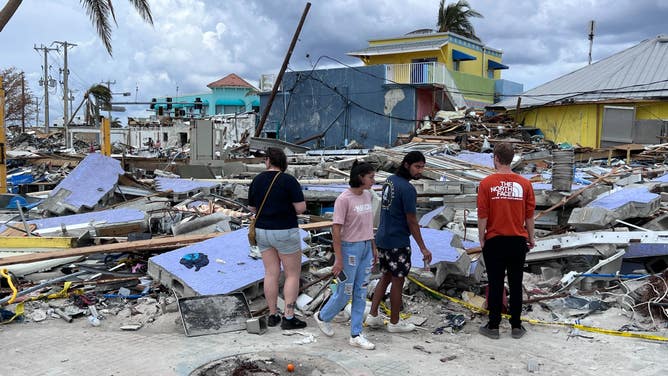
The few homes on Fort Myers Beach that survived sustained damage.
(Robert Ray / FOX Weather)
Contact an insurer immediately and find out how much time you have to file a claim. NFIP allows only 60 days to file a Proof of Loss form. Any overlooked losses can be submitted with a supplemental loss claim. Florida law states that homeowners have 4 years to file a homeowner claim.
Flood, home, auto, boat and property insurers will need to send out adjusters to survey. Try not to throw anything away before its inspected, according to the LDI. Even if it is moldy, try storing the item outside.
In Florida, call the Department of Financial Services Consumer Help Line to make sure the adjustor is properly licensed.
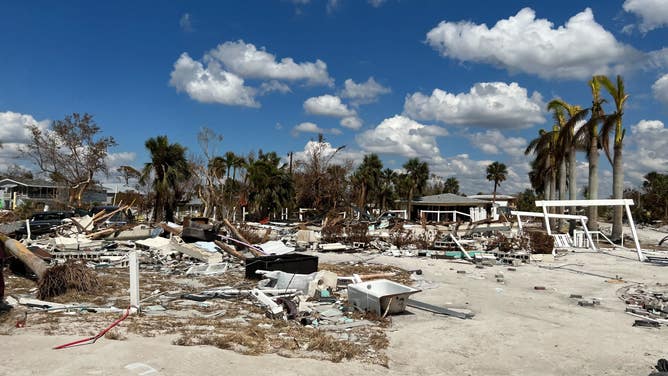
Ian destroyed 90% of Fort Myers Beach, according to officials.
(Brandy Campbell / FOX Weather)
Know your rights and coverages
Florida law requires insurance companies to notify customers within 14 days that the company received the claim and then up to 90 days as to whether their claim was accepted or denied. Insurers than have 20 days to pay up before a 12% yearly interest rate kicks in.
Know what is covered under each type of insurance and limitations:
- Flood is not covered by homeowners insurance look to private insurance policies or NFIP coverageTypically, if only your property is damaged in your neighborhood, it is not considered flood-damage by insurance, according to the Triple-I.
- Typically, if only your property is damaged in your neighborhood, it is not considered flood-damage by insurance, according to the Triple-I.
- NFIP residential building coverage benefits are capped at $250,000, residential contents at $100,000. Business building coverage is $500,000 and contents is $500,000.
- Flood insurance has a 30-day grace period after purchase
- Comprehensive car damage covers the vehicles, even if your car was in a garage that collapsed
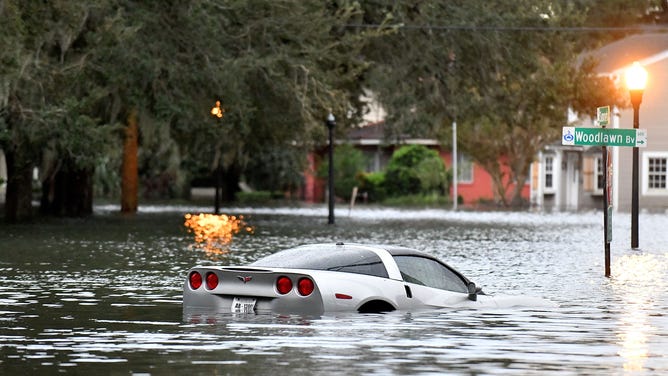
A car floating in Hurricane Ian's floodwaters in Orlando.
(Gerardo Mora / Getty Images)
Look into filing for additional living expenses, if it is included in a homeowner’s policy.
Some policies cover spoiled food and expenses incurred by living out of the home. Unfortunately, most home policies don't cover fallen tree removal if the tree did not damage the property.
You don't need to hire a public claims adjustor, the Triple-I warns. Insurance premiums already cover claims adjustor services.
What if I am not insured or underinsured?
Apply to FEMA for assistance with uninsured or underinsured damage and loss. Financial help may also be available for temporary lodging, clean-up and disaster related expenses.
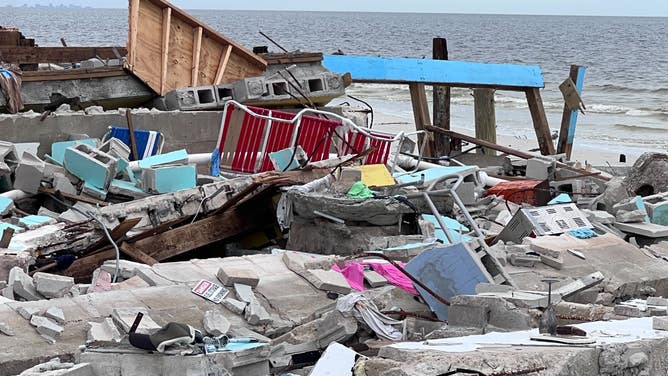
Ruined homes and buildings still litter Fort Myers Beach 2 weeks after the storm.
(Robert Ray / FOX Weather)
"There could be help from FEMA up to about $35,000 for homeowners," Janet Ruiz of the Insurance Information Institute told FOX Weather last year. "Small businesses can go to FEMA for the small business loans, and those usually are up to about $150,000."
Make sure you are satisfied with the settlement before accepting it
Pro hints about the settlement, according to the University of Florida IFAS Extension:
- Work with your adjustor to calculate the value for lost items.
- Ask the adjustor for instructions in writing if you don't understand what needs to be done to complete the claim.
- If you are dissatisfied with the settlement offer, talk to the agent and adjustor. Call the Florida Department of Financial Services Consumer Help Line to find out about mediating the dispute.
Finally, review your policy to make sure that you are fully covered for the next storm.
WHY YOU SHOULDN’T BE ON AUTO-PILOT WHEN IT COMES TO YOUR INSURANCE THIS HURRICANE SEASON
